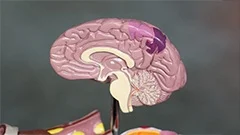Introduction
Embryonic stem cells (ESCs) are pluripotent cells derived from the inner cell mass of a blastocyst, a five-day-old embryo. These unique cells have the remarkable ability to differentiate into all the 200-plus cell types in the human body and self-renew indefinitely. This property makes ESCs an attractive candidate for research on diseases and potential treatments. However, their use is not without controversy due to ethical considerations.
Historical Background
Discovery of Embryonic Stem Cells
The discovery of embryonic stem cells is a landmark event in the field of developmental biology. In 1981, Dr. Martin Evans and his team at the University of Cambridge first isolated ESCs from mouse blastocysts. This breakthrough led to the development of techniques for deriving human ESCs by Dr. James Thomson's group at the University of Wisconsin-Madison in 1998 [Thomson, J. A. (1998)].
Early Applications and Controversies
The early applications of embryonic stem cells focused on understanding human development and exploring their therapeutic potential. However, the use of ESCs in research sparked ethical debates due to the destruction of embryos during cell extraction. The controversy surrounding ESC research continues to this day, with proponents arguing for the potential benefits and opponents focusing on the ethical implications.
Characteristics and Properties of Embryonic Stem Cells
Pluripotency and Self-Renewal
Embryonic stem cells exhibit two fundamental properties that set them apart from other cell types: pluripotency and self-renewal. Pluripotency refers to the ability to differentiate into any of the three germ layers (ectoderm, mesoderm, and endoderm) and all specialized cell types [Takahashi, K., & Yamanaka, S. (2006)]. Self-renewal means that ESCs can divide indefinitely while maintaining their pluripotent state.
Maintenance and Differentiation of Embryonic Stem Cells
Maintaining ESCs in culture requires a suitable environment, usually consisting of feeder layers or specialized media supplemented with growth factors [Williams, R. F., Burdon, A., Hocking, M., & Srinivas, V. (2017)]. To direct ESC differentiation into specific cell types, various methods can be employed, such as the addition of specific growth factors or adjustments to culture conditions [Brustle, O. (2005)].
Ethical Considerations and Controversies
Moral Status of the Embryo
One of the primary ethical concerns surrounding ESC research is the moral status of the embryo. Some argue that the embryo has inherent value and should not be destroyed for research purposes, while others view it as a clump of cells with no greater worth than other tissue samples [Trounson, A. (2004)].
Alternatives to Embryonic Stem Cells
Several alternatives to embryonic stem cells have been developed to address ethical concerns and expand the scope of regenerative medicine. Induced pluripotent stem cells (iPSCs), which can be generated from adult cells, are one such alternative. However, while iPSCs offer many advantages, they also present unique challenges in terms of reprogramming efficiency, tumor formation, and genetic stability [Yu, J., Cheng, L. Y., Huangfu, P., Li, X., Sun, H., Gong, Z., ... & Xu, X. (2007)].
Current Status and Future Directions
Regulatory Landscape and Funding
The regulatory landscape for ESC research varies by country and continues to evolve. In the United States, federal funding was initially prohibited under the Bush administration but has since been reinstated under the Obama administration [Starr, P., & Anderson, M. (2009)].
Clinical Applications of Embryonic Stem Cells
Despite ethical controversies and technical challenges, several clinical trials using ESC-derived cells have demonstrated safety and efficacy in treating various diseases [Kotler, D. P., & Keller, R. A. (2013)]. These successes have fueled optimism for the future of regenerative medicine and the potential to address previously untreatable conditions.
Conclusion
The use of embryonic stem cells presents a complex interplay between scientific advancement, medical progress, and ethical considerations. As researchers continue to explore their potential, it is essential to engage in thoughtful discussions about the moral implications of ESC research and seek alternative approaches that minimize harm while maximizing benefits.
MCQ: Test your knowledge!
Do you think you know everything about this course? Don't fall into the traps, train with MCQs! eBiologie has hundreds of questions to help you master this subject.
These courses might interest you
Create a free account to receive courses, MCQs, and advice to succeed in your studies!
eBiologie offers several eBooks containing MCQ series (5 booklets available free for each subscriber).



